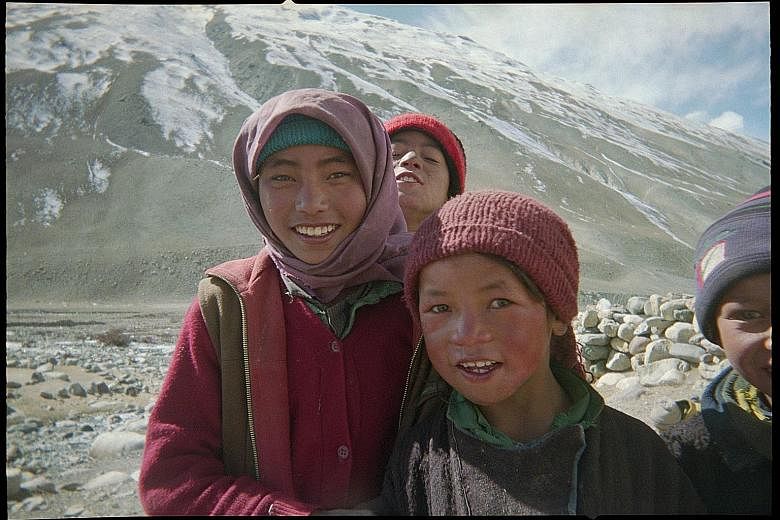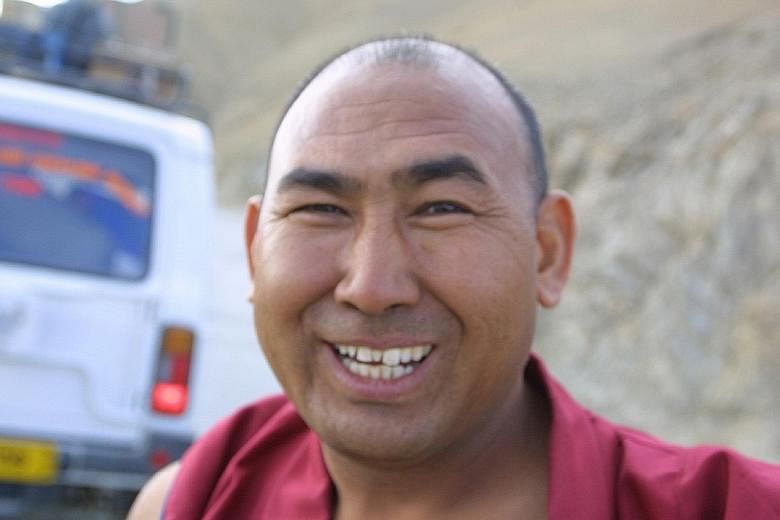This year's Thus Have I Seen Buddhist Film Festival includes a suspenseful documentary about two monks leading a group of 17 children over treacherous terrain so they can go to school.
The children live in the impoverished Zanskar region of northern India. They are Buddhist and culturally and ethnically Tibetan, but in that part of Kashmir, the only school that gives them a chance to rise out of poverty and which caters to their Tibetan heritage, is in a town on the other side of a mountain range.
One of the monks who escorted the children is Geshe Lobsang Yonten, 52.
"Families with a little money can send their children to good Tibetan schools in India. I decided to take children from poor families to these schools," he tells The Straits Times.
His mission, blessed by the Dalai Lama and funded by donations, was captured on film by director Frederick Marx, who produced and co-wrote the Oscar-nominated documentary Hoop Dreams (1994), which follows African-American families who have pinned their hopes for a better future on their sons' talent for basketball.
-
BOOK IT / THUS HAVE I SEEN BUDDHIST FILM FESTIVAL
-
WHERE: Shaw Theatre Lido, 350 Orchard Road, Shaw House, Levels 5 and 6
WHEN: Sept 17 to 24
ADMISSION: Tickets $12 each from Sistic (call 6348-5555 or go to www.sistic.com.sg)
INFO: www.thisfilmfest.com
Journey From Zanskar (PG13, 90 minutes) is also about one generation making sacrifices so that the next one can rise.
The film opens with Geshe Yonten, with another monk Lobsang Dhamchoe, walking about the Zanskari farms, persuading families to send their offspring to a faraway school. It is a heartrending choice as the poverty, high peaks and military strife in the region mean a long separation.
"It was a difficult decision. They would not be able to see each other for eight to 10 years," says Geshe Yonten, himself born in Zanskar and educated elsewhere in India. He is now in Singapore, teaching at the Tibetan Buddhist Centre.
In that winter of 2003, the pair of monks gather up 17 young ones, aged four to 12, selected for their smarts and their ability to withstand the rigours of the long walk.
Helped by a few yaks and horses, they start the five-day trek, a trip that will see the rag-tag band of kids and adults face extreme cold, altitude sickness, dehydration, snow blindness, falling rocks or the risks of falling from sheer cliffs or into hidden crevasses.
Team members, including the film-makers, suffer setbacks. The primitive state of communications in the region made it impossible to discover the state of paths ahead of time.
"We had no phones, we had to just guess how much snow there was in the mountain pass," he says.
The team would walk a long way up a mountain, risking death, to see for themselves if it was passable and if it was not, turn around and walk all the way down.
In the end, Geshe Yonten thinks, it was worth the heartache and the risks.
He notes: "In the 21st century, people cannot have a good future without modern education."



